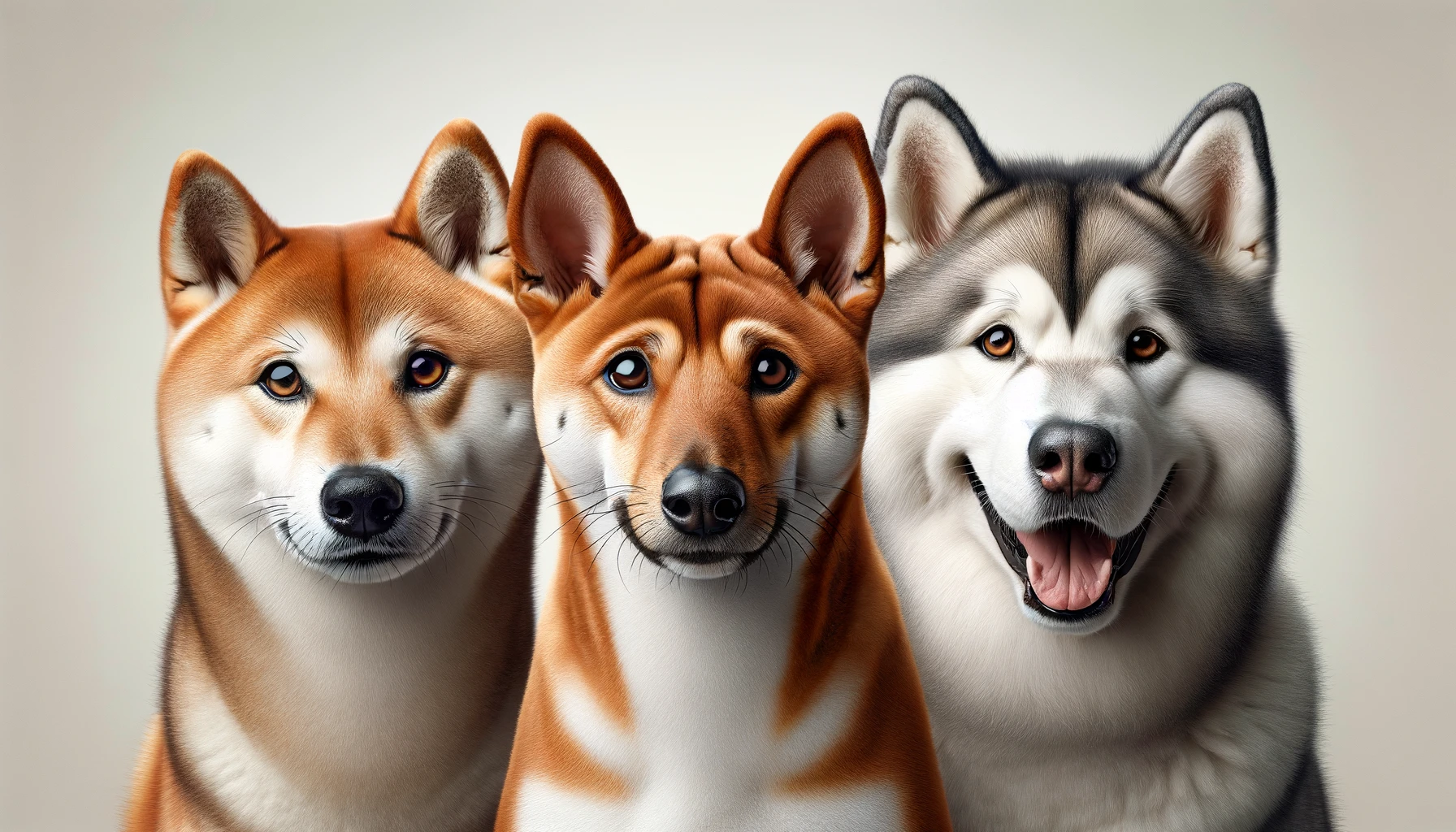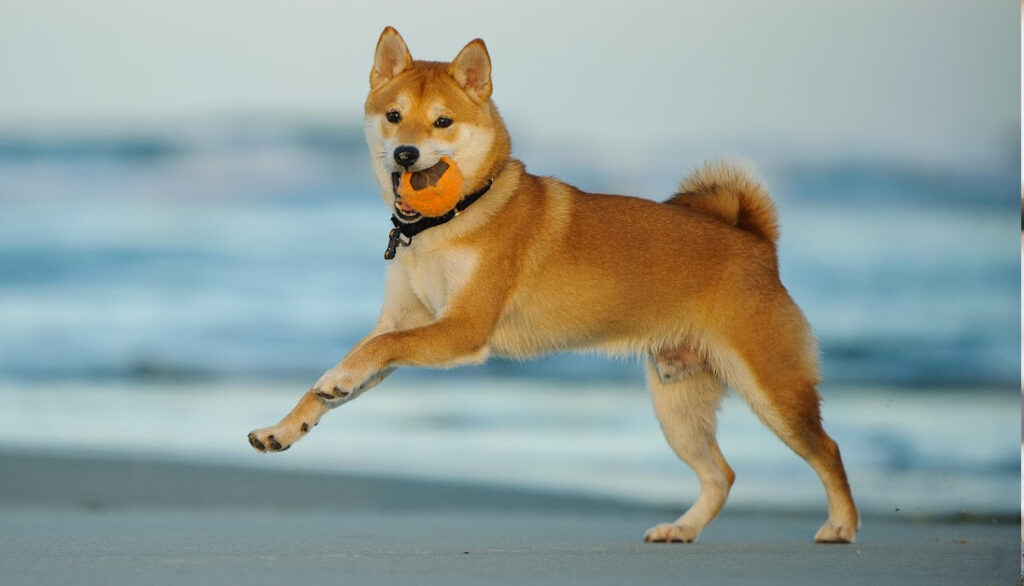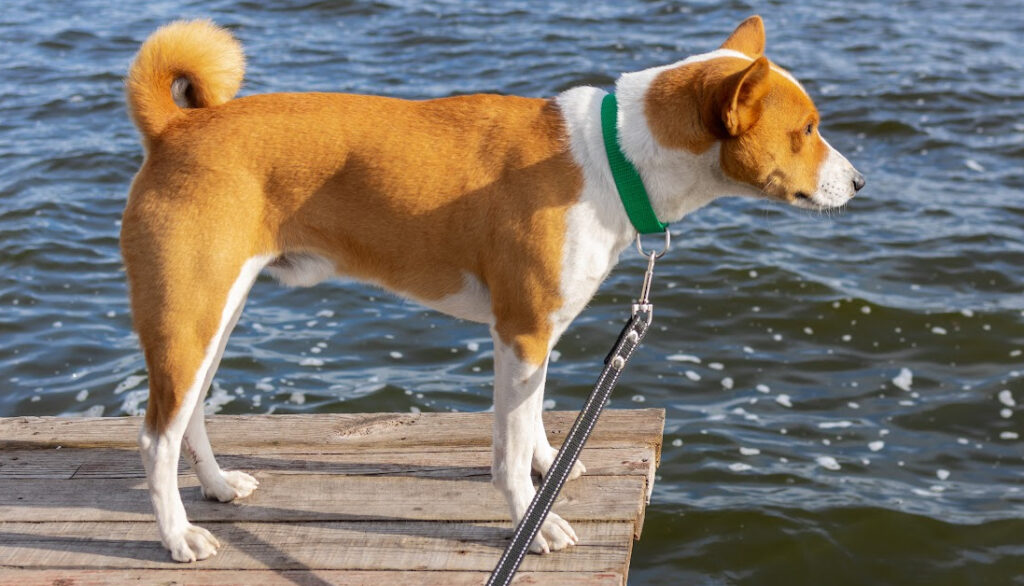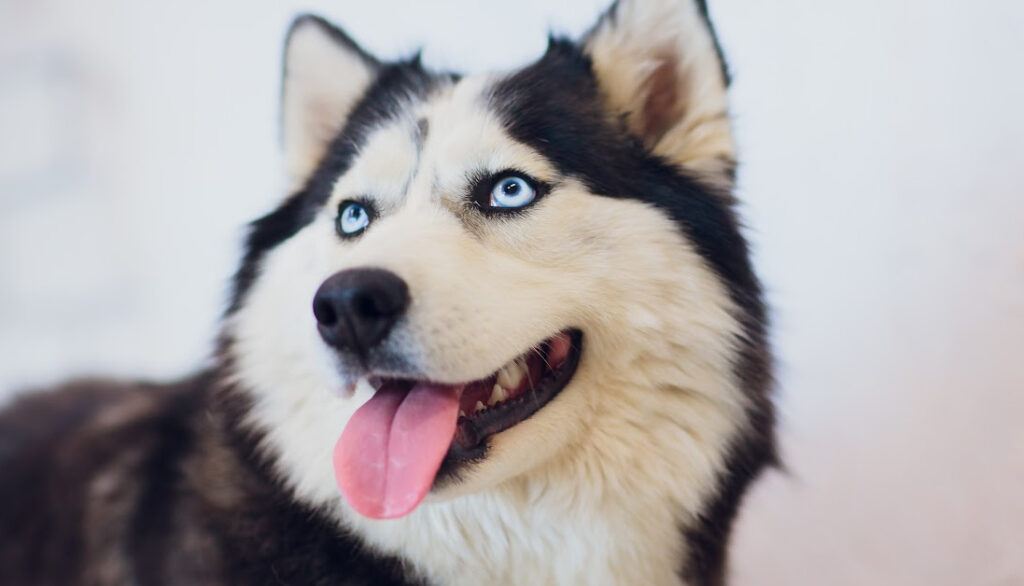Understanding the Significance of Primitive Canines
If you’re a dog lover like me, you’ve probably wondered about the history of your furry friend. Isn’t it fascinating to think that our pet pooches share a lineage with wild wolves? Just imagine, those cuddly, tail-wagging creatures that share our homes and hearts descended from untamed predators of the wilderness. This is where primitive dog breeds come into the picture. They serve as living links to our pets’ wild ancestors and offer us a unique opportunity to connect with the primal roots of Canis lupus familiaris.

The Characteristics That Define Primitive Dog Breeds
So, what sets these primitive breeds apart? Well, they retain many of the physical and behavioral traits of their wild forebears. Often more independent and tenacious, these dogs exemplify the rugged survival instincts that helped their ancestors thrive in harsh environments. While their stubborn streak can be a challenge for inexperienced dog parents, their intelligence and resilience are truly awe-inspiring. The distinctive physical features of primitive breeds – like upright ears, curled tails, and fox-like faces – are more than just charming quirks. They’re echoes of a time when dogs had to fend for themselves in the wild.
However, don’t let their wild roots intimidate you. These dogs, while a bit more independent, are just as capable of forming deeply loving and meaningful relationships with their human families. Their rich history simply adds another layer to their incredible charm and allure.
In this article, we’re going to delve deeper into the world of primitive dog breeds, exploring their unique traits, diving into their origins, and highlighting how these ancient breeds have adapted to modern life. Buckle up, my fellow dog lovers, because we’re about to embark on a truly wild ride into the primal history of man’s best friend.
The Evolutionary Journey of Primitive Dog Breeds
Imagine for a moment, a prehistoric world, brimming with wildlife and echoing with the calls of animals yet unseen by modern eyes. Now, enter the primitive dog, an integral part of this ancient landscape. Ever wondered how these ancient creatures transformed into the diverse range of dog breeds we have today? Let’s embark on an exciting journey to trace the evolutionary path of primitive dog breeds.
Tracing the Origins: From Wild to Domestic
The story of our furry companions begins with their wild ancestors. Observable evidence suggests that dogs first diverged from wolves around 20,000 to 40,000 years ago. During this time, certain wolves began to interact more closely with humans, leading to a gradual process of domestication. These wolves were likely the more curious and less fearful of their pack, making them better candidates for interaction with people.
This early association was beneficial for both species. Dogs provided protection, helped with hunting, and even served as a source of warmth during cold nights. In return, they got a consistent food source and protection from larger predators. Over time, these wolves evolved into a separate species – our beloved dogs – with distinct characteristics tailored to their new way of life. This marked the birth of the first primitive dog breeds.
How Primitive Breeds Differ from Modern Dogs
Primitive dog breeds like the Basenji or the Shiba Inu, retain many characteristics of their wild ancestors. These include physical traits such as pointed ears, almond-shaped eyes, and a curled tail, which were common among early domesticated dogs. But, the differences go beyond just looks.
- Primitive dogs have a strong prey drive, reflecting their ancestral need to hunt for survival.
- Their sense of independence is more pronounced, a trait that helped their wild ancestors survive under harsh conditions.
- They are usually more reserved and aloof towards strangers, a characteristic that can be traced back to their need to protect their packs in the wild.
- These breeds often have a higher endurance and can survive in a wide range of environments, a testament to their adaptability through evolution.
It’s important to note that while primitive dog breeds share common traits with their wild ancestors, they are not wild animals. They have lived alongside humans for thousands of years and have adapted to our lifestyles while preserving their unique characteristics. This makes them a fascinating link between the domestic dogs we know today and their wild predecessors.
Understanding the evolutionary journey of primitive dog breeds not only enriches our knowledge about these captivating creatures but also enhances the bond we share with them. It reminds us that at their core, our loyal companions still carry the spirit of the wild, adding another layer of intrigue to the already profound connection between humans and dogs.

List of Primitive Dog Breeds
In the diverse world of canines, primitive dog breeds, also commonly known as ancient or indigenous dog breeds, hold a unique place. These breeds are significantly closer to their wild ancestors in terms of genetics, behavior, and physical characteristics. Here’s a look at some of these timeless breeds:
Shiba Inu
Originally from Japan, the Shiba Inu is a small yet robust breed. Though they may look cuddly and cute, Shibas have a strong prey drive and an independent nature that’s reminiscent of their primitive ancestors. They are known for their intelligence, agility, and alertness.
Basenji
Often referred to as the “barkless dog,” the Basenji is believed to be one of the world’s oldest dog breeds, with origins traced back to central Africa. What makes Basenjis unique is their inability to bark. Instead, they communicate with a distinctive sound, often compared to a yodel, known as a “barroo.”
Alaskan Malamute
Not to be mistaken with its more modern relative, the Siberian Husky, the Alaskan Malamute is one of the oldest Arctic sled dogs. These dogs are known for their incredible strength, endurance, and ability to carry heavy loads over long distances.
Azawakh
The Azawakh breed, which originated from the Sahel region of Africa, is a slim, tall, and elegant breed. They were initially used for hunting and guarding livestock. Known as aloof and reserved, Azawakhs have a strong attachment to their families.
Thai Ridgeback
As the name suggests, the Thai Ridgeback is indigenous to Thailand and was used for various purposes like hunting, guarding, and pulling carts. They are easily identifiable by the characteristic ridge on their backs caused by the hair growing in the opposite direction.
Unique Traits of Each Primitive Breed
What sets primitive dog breeds apart are their unique traits and characteristics, many of which have been preserved for thousands of years.
Shiba Inus are known for their fox-like appearance, intense stare, and curled, bushy tail. They’re independent and can be reserved towards strangers but are fiercely loyal to their families.
Basenjis are small, elegant dogs with expressive, almond-shaped eyes. Their silent nature, coupled with their intelligence and agility, makes them unique.
Alaskan Malamutes are large, sturdy dogs with a thick, double coat that was essential for their survival in Arctic conditions. They are friendly, outgoing, and sociable dogs.
Azawakhs are tall and slender, with a thin skin that clearly shows their musculoskeletal structure. They are reserved, protective dogs who form strong bonds with their human families.
Thai Ridgebacks, apart from their unique ridge, are known for their muscular, robust bodies and a coat that comes in a variety of colors. They are intelligent, loyal dogs with a strong protective instinct.
Each of these primitive dog breeds has its unique appeal and characteristics. However, they all share common traits such as independent thinking, strong prey drive, and a close genetic link to wild canines. Owning a primitive dog breed can be a unique experience, offering a glimpse into the canine world’s ancient past.
The Shiba Inu: A Case Study in Primitive Breed Popularity
The History and Culture Surrounding the Shiba Inu
The Shiba Inu is an outstanding example of a primitive dog breed that has firmly made its mark in the hearts of dog lovers. Born and bred in Japan, the Shiba Inu is considered one of the oldest and smallest dog breeds in the world. Often linked to Japan’s long history, dating back to 300 B.C., the breed was primarily used for hunting small game in the country’s mountainous regions.
Steeped in Japanese culture and tradition, the Shiba Inu’s name is quite interesting. Shiba’ translates to ‘small’, while ‘Inu’ means ‘dog’, thus ‘small dog. Yet, the breed is known for its bold and spirited nature, often seeming much larger than it is. This compact but courageous canine has been depicted in many ancient Japanese artworks, showcasing its significant cultural importance.
Behavioral Traits and Care Considerations
The Shiba Inu has a captivating personality that’s as unique as its history. This breed is known for its independent spirit, intelligence, and strong-willed nature. They are agile, quick, and alert, making them excellent watchdogs. However, their independent nature can translate into stubbornness, and they often require an owner who can provide firm, consistent training.
Though small in size, the Shiba Inu has a big personality. They are known for their iconic ‘Shiba scream’ – a high-pitched howl they let out when they’re happy, scared, or just want some attention. This quirky characteristic adds to the allure of the breed.
When it comes to care considerations, the Shiba Inu has a thick, plush double coat that is beautiful but requires regular grooming. They are known to ‘blow’ their coats twice a year, a heavy shedding period during which daily brushing is necessary. They are also a very active breed and require daily exercise to keep them healthy and content.
The Shiba Inu is also known for its long lifespan; it’s not uncommon for them to live into their mid-teens. However, they are prone to certain health conditions such as allergies, hip dysplasia, and eye problems. Regular vet check-ups are essential to keep them in optimal health.
In essence, the Shiba Inu is more than just an adorable, fox-like dog. This primitive dog breed offers a unique blend of ancient lineage, rich cultural history, and a distinctive, lively personality. Their popularity is a testament to the enduring appeal of primitive dog breeds and their significant place in our world of diverse canine companions.

The Basenji: The Barkless Primitive Breed
Unraveling the Mystery of the Basenji’s Quiet Nature
The Basenji, often referred to as the “Barkless Dog,” holds a special place among primitive dog breeds. This ancient breed is known for its unique vocalizations, which sound more like yodels or howls than the typical dog bark. This unusual trait is believed to have originated from their early existence in Central Africa, where a quiet hunting companion was more beneficial.
Basenjis are small to medium-sized dogs, with a sleek muscular build, a wrinkled forehead, and expressive almond-shaped eyes that reveal a high level of intelligence and curiosity. They have a short, glossy coat that comes in various shades such as chestnut, black, brindle, or tricolor.
But what truly sets Basenjis apart is their intriguing behavior that often seems more akin to felines than canines. They are known to be independent and aloof, often appearing to be in their own world. They are also incredibly agile and are known to climb trees, just like cats.
The Basenji’s Health and Lifestyle Needs
Despite their primitive status, Basenjis have adapted well to modern living conditions. However, as a prospective Basenji parent, there are certain things you need to know about their health and lifestyle needs.
- Exercise: Basenjis are energetic and require regular mental and physical stimulation to prevent boredom and destructive behavior. Daily walks, playtime, and puzzle toys are great for keeping them engaged.
- Diet: Basenjis do well on high-quality dog food, either commercially manufactured or home-prepared under veterinary supervision. They can be prone to obesity, so monitor their calorie consumption and weight level.
- Grooming: Basenjis are clean dogs with little odor. Their short coat is easy to care for and requires minimal grooming. Like cats, they groom themselves but still need regular brushing to remove dead hair.
- Health: Basenjis are generally healthy dogs, but they can be prone to certain breed-specific conditions like Fanconi Syndrome (a kidney disorder) and Progressive Retinal Atrophy (PRA). Regular vet check-ups are essential.
Owning a Basenji can be a unique and rewarding experience. Their quiet nature, combined with their playful and affectionate demeanor, makes them a fascinating addition to any household. However, they are not for everyone. Their high energy levels and independent streak require an owner who can provide firm, consistent training, and plenty of physical and mental stimulation.
In the end, understanding and catering to the unique needs of this ancient breed will ensure a harmonious relationship between you and your Basenji, as you both navigate the modern world while honoring a rich, primitive heritage.
Primitive Dog Breeds: Connecting with Canine Ancestors
The Role of Primitive Dog Breeds in Modern Society
Primitive dog breeds provide an intriguing glimpse into the past, living reminders of our shared history with canines. Today, as we navigate our busy digital lives, these ancient breeds continue to play important roles both culturally and scientifically.
The Importance of Preserving Primitive Dog Breeds
Preserving these ancient breeds is about more than just nostalgia or a need for variety in the canine world. Each of these breeds carries a unique combination of genetic traits that allow us to study the evolution of dogs and their relationship with humans. They also offer a wealth of information on genetic diseases that can be helpful in understanding similar conditions in humans.
Moreover, primitive breeds serve as repositories of biodiversity. Their unique genetic makeups contribute to the overall health and vitality of the canine species. Preserving them helps ensure the survival of this vast genetic diversity.
The importance of preserving primitive dog breeds cannot be overstated. They are integral to our understanding of dog genetics, canine health, and the history of our relationship with dogs.
Integrating Primitive Breeds into Contemporary Life
Primitive dog breeds, thanks to their resilience and adaptability, have found their place in modern society. Despite their inherent wildness, these breeds are capable of living alongside humans in our contemporary world.
While they may require different care and training methods compared to modern breeds, primitive dogs can fit well into various lifestyles. For instance, independent breeds like the Shiba Inu may be a good fit for those who appreciate a dog with a strong personality and self-sufficient nature. On the other hand, the Basenji’s quiet nature may appeal to those living in apartments or neighbourhoods with noise restrictions.
Integrating primitive breeds into our lives also involves embracing their unique traits and behaviors. It means understanding their needs for mental stimulation, physical exercise, and social interaction, which often exceed those of modern breeds.
In return, owning a primitive breed offers an enriching and rewarding experience. They offer a bridge to a time when life was simpler, and our bond with these animals was crucial to our survival. Plus, there’s a certain pride and joy in knowing that your canine companion carries the legacy of an ancient lineage.
In a world where everything is increasingly homogenized, primitive dog breeds offer a breath of fresh air. They are a testament to the diversity, resilience, and richness of the canine species. They remind us that despite the passage of thousands of years, the bond between humans and dogs remains as strong as ever.
Though they may seem out of place in our modern world at first glance, primitive dog breeds are an important reminder of our past. Embracing these ancient breeds not only enriches our lives but also ensures the survival of these remarkable animals for generations to come.

Training and Socializing Primitive Dog Breeds
As we delve into the world of primitive dog breeds, it’s crucial to understand that these unique canines not only look different but behave differently as well. Their independent nature and strong instincts make training and socializing them a different experience compared to more domesticated breeds. You might find that they have their own ideas about what they want to do, and convincing them otherwise can be a challenge. However, with a little patience and understanding, you can successfully train and socialize your primitive dog breed.
Effective Training Techniques for Independent Breeds
Training a primitive dog breed often requires a different approach. Their independence and intelligence mean they’re not always keen on pleasing their owners like some other breeds. Here are some techniques that can work well:
- Positive Reinforcement: Primitive dog breeds respond best to positive reinforcement. This could be in the form of treats, praise, or toys. Instead of punishing them for bad behavior, reward them for displaying good behavior.
- Consistency: Make sure the rules are always the same. This helps your dog understand what is expected of them, reducing confusion and encouraging good behavior.
- Persistence: Training may take a bit longer with primitive breeds. It’s important not to get frustrated or give up. Your persistence will pay off over time.
Socialization Strategies for Primitive Dogs
Socializing primitive breeds is equally important as training. A well-socialized dog is confident and comfortable in a variety of settings, which leads to fewer behavioral issues. Here are some strategies:
- Start Early: The earlier you begin socializing your pup, the better. Expose them to different people, animals, environments, and experiences as early as possible.
- Controlled Exposure: While early socialization is key, it should also be carried out in a controlled manner to avoid overwhelming your dog.
- Positive Associations: Make every social interaction positive by rewarding your dog with treats and praise.
Remember, every dog is an individual, and what works for one might not work for another. It’s all about understanding your dog, being patient, and working together. Although primitive dog breeds may be a bit more of a challenge to train and socialize, the bond you’ll form and the satisfaction you’ll feel once you’ve succeeded in your training goals is indescribable. As a dog parent, it’s a unique journey that brings you closer to these incredible canines and their ancient roots.
The Future of Primitive Dog Breeds
As the world continues to change and evolve, it’s important to consider what the future may hold for our beloved primitive dog breeds. These fantastic creatures, that have stood the test of time, play a vital role in our understanding of canine history and evolution.
Conservation Efforts for Endangered Primitive Breeds
Sadly, many of our ancient canine breeds are struggling to survive in the modern world. Strains of urbanization, lack of appropriate breeding practices, and a shift in preference towards more popular breeds have put several of these relic breeds at risk.
But not all hope is lost. Enthusiastic breeders, canine historians, and dog lovers around the globe are stepping up to protect and conserve these precious canine ancestors. From establishing dedicated breeding programs to raising awareness about their plight, numerous strategies are being employed to ensure these breeds do not vanish.
Saluki, one of the world’s oldest breeds, is being preserved by the Saluki or Gazelle Hound Club. On the other hand, the Lundehund, a unique breed with additional toes, is being conserved by the Norwegian Lundehund Club of America, Inc.
The Continuing Appeal of Primitive Dog Breeds in a Modern World
Despite the challenges, primitive dog breeds continue to charm and fascinate dog enthusiasts worldwide with their distinctive characteristics, remarkable history, and unparalleled resilience. Whether it’s the independent spirit of the Shiba Inu or the enigmatic silence of the Basenji, each of these breeds brings something unique to the canine world.
The appeal of primitive breeds isn’t limited to their intriguing history or unique traits. On a deeper level, they connect us with our past, helping us understand our roots better. They are living testament to human-canine companionship that predates modern civilization.
In the end, it’s up to us, the dog lovers, to ensure that these remarkable breeds continue to thrive in the future. By promoting responsible breeding, supporting conservation efforts, and educating others about the importance of these breeds, we can help preserve these vital links to our canine past.
It’s a beautiful journey, isn’t it? Owning a primitive breed isn’t just about having a pet; it’s about carrying a piece of history with you, a living, breathing testament to the past. So, let’s pledge to safeguard these treasured breeds for future generations to appreciate and adore. Let’s ensure that the future remains bright for our fascinating primitive dog breeds. Together, we can make a difference.
Frequently Asked Questions
1. What are primitive dog breeds?
Primitive dog breeds, also known as ancient or indigenous breeds, are types of dogs that have the least amount of genetic divergence from wolves. They are believed to be closer to the original canine ancestors in terms of genetics and behavior.
2. How do primitive dog breeds differ from modern breeds?
Primitive dog breeds are typically more independent, hardy, and adaptable than modern breeds. They have been bred for survival rather than specific physical characteristics or tasks, which is often the case with modern breeds.
3. Can primitive dog breeds make good pets?
Yes, primitive dog breeds can make good pets, but they may not be suitable for everyone. They tend to be more independent and may require more exercise and mental stimulation than some modern breeds. They can also be more challenging to train due to their independent nature.
4. What are some examples of primitive dog breeds?
Some examples of primitive dog breeds include the Basenji, Shiba Inu, Alaskan Malamute, Siberian Husky, and the Afghan Hound.
5. How can I connect with my primitive dog breed?
Understanding the breed’s history and natural instincts can help. Providing them with plenty of exercise and mental stimulation is also important. Training should be consistent and positive, and socialization from a young age can help them adapt to living with humans.
Dr. Candy, a holistic veterinarian and certified raw dog food nutrition specialist, graduated from Oklahoma State University in 2009 with a DVM and has since specialized in companion animal nutrition, advocating for species-specific diets. With a background in wildlife rehabilitation and oil spill response, she combines holistic health and conventional medicine in her unique approach to treating chronic diseases, allergies, and autoimmune conditions in pets. As the owner of a veterinary practice in Colorado and an author, Dr. Candy is dedicated to educating pet parents and improving the health and happiness of animals.




